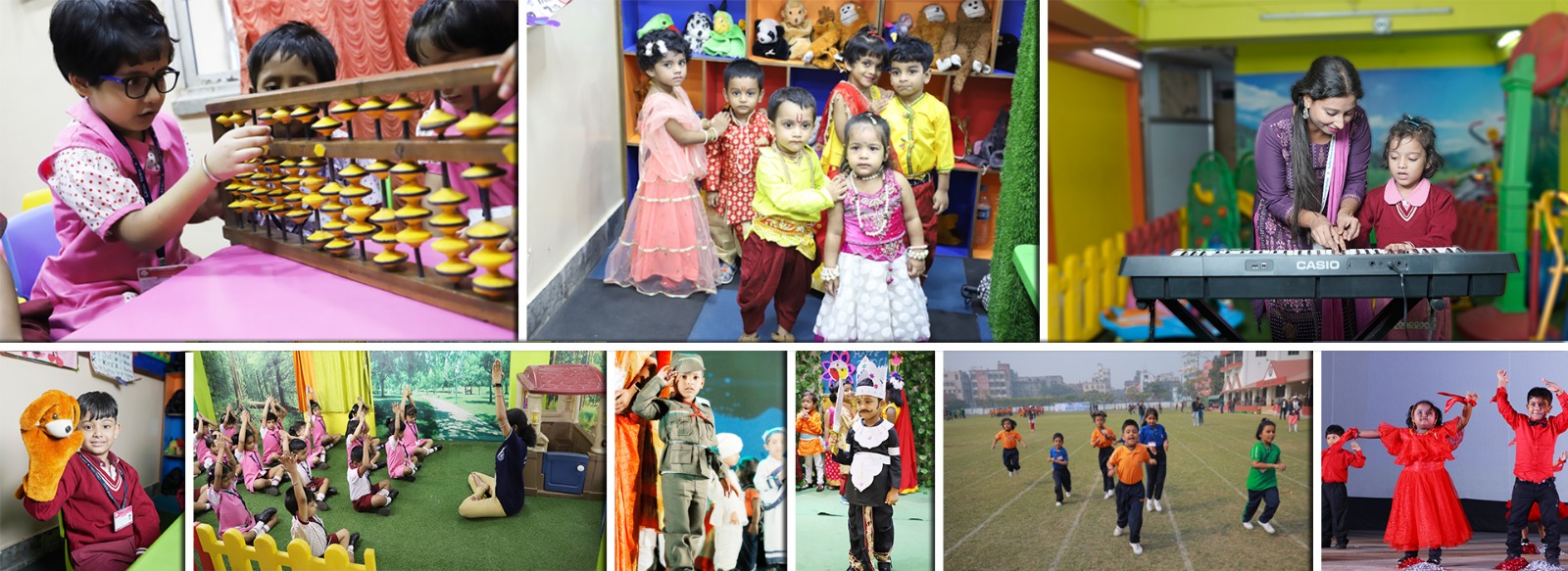ACTIVITY BASED LEARNING
Activity-based learning refers to a teaching methodology where the subject matter is delivered through various activities that make learning more interesting and engaging. In this type of learning, student is the center of the process and teacher acts only as a facilitator, introducing and guiding them through the activities. Students learn independently and at their own pace.
Activity-based learning encourages children for the following:
 Engage: Children are involved in doing the activities designed and thus engage in their own learning process
Engage: Children are involved in doing the activities designed and thus engage in their own learning process
 Experiment: There is no standard answer to be replicated, hence children get the scope to experiment and arrive at their own solutions to a given problem
Experiment: There is no standard answer to be replicated, hence children get the scope to experiment and arrive at their own solutions to a given problem
 Explore: Learning through activities creates curiosity in children to investigate and find more information about a given problem/situation
Explore: Learning through activities creates curiosity in children to investigate and find more information about a given problem/situation
 Express: When children are thoroughly involved in the learning process it enables them to express their findings/ learning more confidently.
Express: When children are thoroughly involved in the learning process it enables them to express their findings/ learning more confidently.
LIVE EDUCATION
There is no doubt that traditional education has been forced to explore new avenues and learning methodologies. Learning has been pulled from the classroom and taken place in practical environment like production units, shopping malls, amusement parks, kitchens, gardens, through headphones and fiber optic cables. However, there is a real difference between learning that takes place in an environment and learning that actually uses the environment.
We all know that learning takes place experientially in every corner of our environment, but yet tend to support it only within the confines of four walls. This is a missed opportunity.
We at SMIL believe that education in the live environment, not only creates interest but also encourages active participation. There is a clear understating of the topic, a higher level of association, and in-depth knowledge of the subject matter.
LEARNING WITH NATURE
Nature is a changing environment in which we not only interact with the abundance of sounds, smells, and textures but also begin to build more of a relationship with the natural world. Where and how we learn will forever stay with us through a strong emotional bond, and so connecting positive learning experiences with the natural world will help us feel part of it.
The richness of possibility when learning in nature means creativity is truly unfettered. Learning maths through natural objects, or learning about scientific practice as they provide evidence for which type of pine tree they think that is, or what type of insect has landed in the palm of their hand.
Learning in nature is not only an enriching way to bring real life and learning together, but it is also calming, centering, and grounding.








